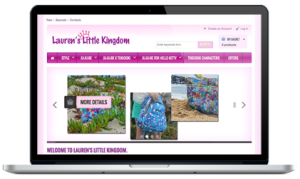Unlocking the Power of Automated Lead Generation Strategies

Unlocking the Power of Automated Lead Generation Strategies
Lead generation has become an increasingly important part of modern digital marketing, with many businesses relying on it for continued growth and success. As such, it is essential that companies have the right strategy in place to ensure their lead generation efforts are as effective as possible. One of the most efficient methods for doing this is through automation, which enables businesses to reach potential customers faster and more effectively than ever before.
In this blog post, we’ll explore the power of automated lead generation strategies and how they can help your business grow. We’ll look at the key components involved in setting up a successful lead generation program, as well as the various tools and technologies available to get you started. Lastly, we’ll discuss some best practices you should follow to generate leads on autopilot and maximize your return on investment (ROI).
What is Automated Lead Generation?
Automated lead generation is a process whereby businesses use technology-enabled tools and systems to drive customer acquisitions by targeting potential customers based on their profile data. It involves leveraging data gathered from various sources such as website visits, email campaigns and social media interactions to identify leads who show signs of interest in your product or service offering. This process helps businesses generate qualified leads quickly and efficiently without investing too much time or money into manual prospecting processes.
Components of an Automated Lead Generation Strategy
An effective automated lead generation strategy should be built on three key elements: data collection, segmentation & targeting, and optimization & testing. Data collection involves gathering relevant customer information from multiple channels such as web forms, surveys, site visits etc., Segmentation & targeting allows you to focus your efforts on those leads that are most likely to convert into paying customers by using criteria such as job title or purchase history. Finally, optimization & testing ensures that you’re continuously improving results by making necessary adjustments based on performance metrics like ROI.
Tools & Technologies For Automated Lead Generation
There are several different tools available for automated lead gen campaigns ranging from basic email marketing software solutions such as MailChimp or Constant Contact to more sophisticated customer relationship management (CRM) systems like Salesforce or HubSpot CRM. Additionally, there are plenty of advertising platforms such as Google Adwords or Facebook Ads Manager that offer native support for automated lead gen campaigns with features like audience insights and campaign tracking capabilities.
Best Practices For Generating Leads On Autopilot
Once you have your automated lead gen campaigns set up correctly with all the necessary components in place it’s important to ensure everything is running optimally at all times by following some key best practices:
- Establish a clear goal for each campaign – e.g., “Generate 100 qualified leads per month”
- Set realistic goals in terms of cost per conversion – e.g., “Spend no more than $1 per signup/download/subscription etc.”
- Optimize ad copy regularly using A/B testing techniques
- Monitor conversion rates closely using analytics tools
- Use dynamic retargeting ads to maximize ROI across channels
By carefully planning out an effective automated lead generation strategy that incorporates these components along with best practices listed above, businesses can streamline their efforts while maximizing their return on investments over time – allowing them make the most out of their resources while ensuring maximum impact from their campaigns!







